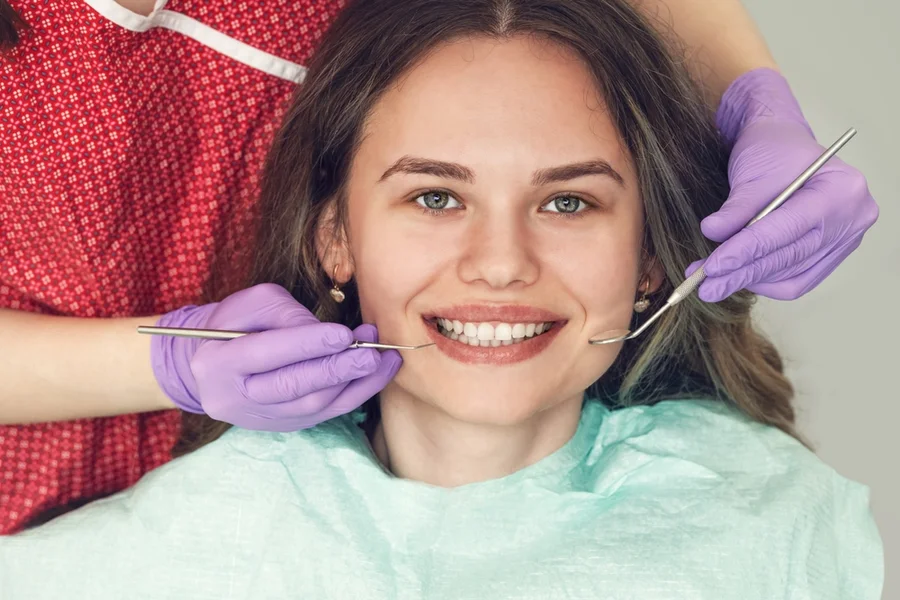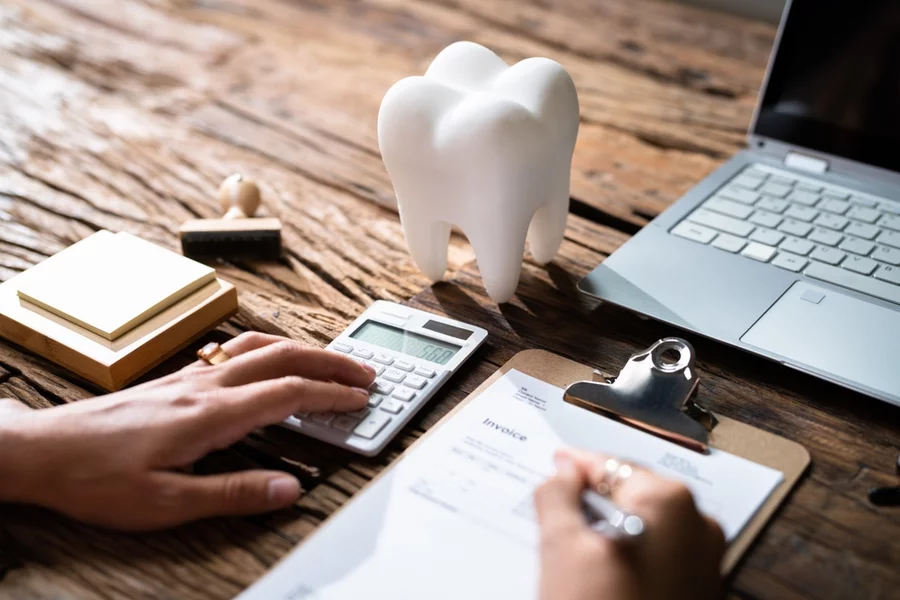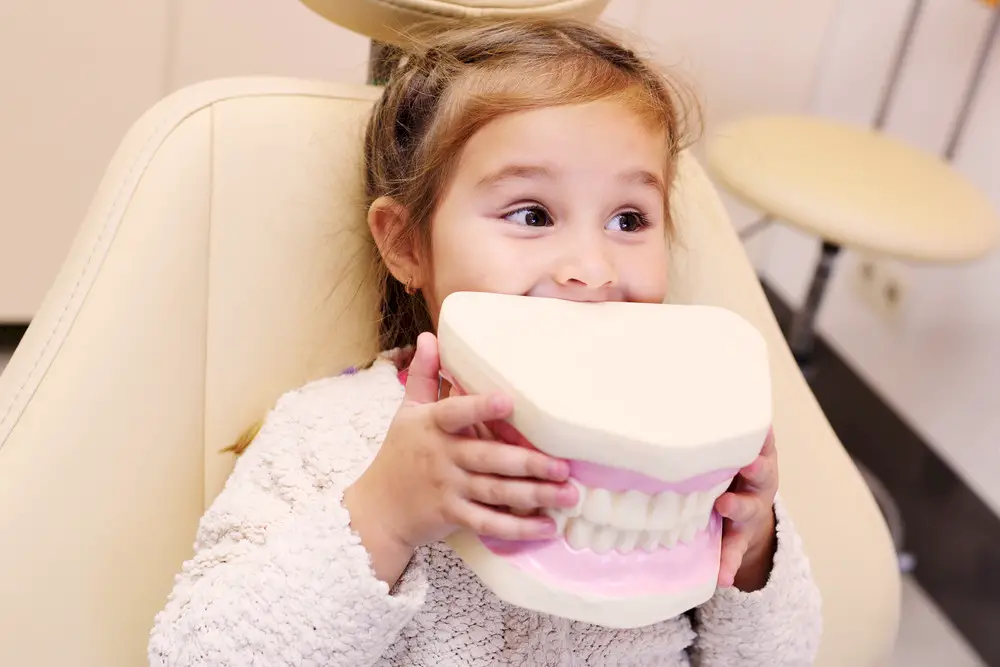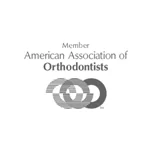Blog Summary:
- Gingivitis is extremely common, affecting over 70% of children ages 6–11 in the U.S.
- Fortunately, Gingivitis is reversible with early action, consistent at-home care, and regular dental visits.
- The condition develops in clear stages—from invisible inflammation to visibly swollen, bleeding gums—but can still be reversed before it becomes advanced-stage gum disease (periodontitis).
- Home care essentials include brushing twice daily, flossing, using alcohol-free mouthwash, and routine dental cleanings.
- Mild Gingivitis often clears up within 1–3 weeks of improved oral hygiene.
- While gingivitis can be cured, it can return quickly, too without lifelong oral care habits.
- Kids need help brushing until at least age 7–8 and should be closely monitored for signs of early gum disease. If you do observe these signs, bring them to the dentist.
As far as dental issues experienced by American children and adults go, Gingivitis is among the most common. In fact, the National Institutes of Health found that an overwhelming majority, or over 70%, of American kids aged 6-11 show signs of Gingivitis.
But did you know that Gingivitis is maybe also the most reversible dental health issue? It’s true! If you’ve noticed that your gums bleed regularly or you have persistent bad breath, you might be wondering, “Can you cure Gingivitis?” and if so, “How long does it take to reverse Gingivitis?” or even “How is Gingivitis reversed?”.
Here’s the short answer: Gingivitis is reversible with a combination of daily care, early action, and dental intervention. Below, we’ll dive deeper into all of these things so you can keep yourself and your little ones happy and their mouths squeaky clean and inflammation-free!
What is Gingivitis & Why Does it Happen?
Simply put, Gingivitis refers to inflammation of the gum tissue, usually caused by bacterial plaque building up around the gumline and between the teeth (known as plaque-induced Gingivitis). But there are other types of Gingivitis too, including Nutritional Gingivitis, Hormonal Gingivitis, and Drug-Induced Gingivitis.
Technically, Gingivitis is the first stage of periodontitis (gum disease). But it can be seen as a precursor to periodontitis rather than the initial stage of it because, unlike gum disease, Gingivitis is reversible. This is because it hasn’t yet impacted the bones or surrounding tissues.
Probably the most common triggers of Gingivitis include:
- Poor and/or inconsistent oral hygiene habits
- Sugary diets and nutritional deficits
- Hormonal shifts such as those occurring during puberty or pregnancy
The Stages of Gingivitis: A Gum Disease Progression Timeline
Gingivitis develops in stages. Early detection and intervention are key to reversing it completely! Here are the 3 stages of Gingivitis:
- Initial Lesion: Plaque builds up, and within 2-4 days of this buildup, it causes inflammation of the gums. Usually, this stage is not associated with any visible signs or tactile symptoms.
- Early Lesion: Within a week, the gums may begin to look red. They may bleed when brushed. In this stage, lymphocytes and macrophages dominate the immune response.
- Established Lesion: When left unchecked, inflammation gets worse, and immune cells such as B-lymphocytes and plasma cells begin accumulating. Gum pockets may also develop at this stage. But even at this stage, Gingivitis is still reversible!
While some include a stage 4, or Advanced Lesion (periodontitis) as a stage of Gingivitis, this stage marks the point of no return, where infection reaches the bone and connective tissue, causing permanent damage. Therefore, it’s arguably more accurate to demarcate stage 4 as the beginning of advanced gum disease as opposed to a state of Gingivitis, which definitionally, is reversible.
How to Reverse Gingivitis at Home
With a little help (and a lot of consistency), stopping Gingivitis’ progression in its tracks – and even fully reversing it – is possible. In some cases, it’s even possible to reverse it yourself with home remedies only, rather than with the help of others or professional cures.
The exception is little kids. As we covered in a previous blog post, “If a child has gingivitis, it is imperative for them to develop a consistent oral hygiene routine, supported by the parents. In addition, it can be treated with regular dental checkups. Remember that children still need help brushing their teeth until they are around age 7 to 8.”
If you’re an adult, though, you can likely reverse Gingivitis at home by taking the following four actions:
- Brush twice daily. Make sure to use an anticavity toothpaste with fluoride or nano-hydroxyapatite.
- Floss at least once daily or use a water flosser.
- Use alcohol-free mouthwash.
- While not technically an “at-home” remedy, it’s also important to supplement the above with routine dental cleanings.
How Long Does it Take to Reverse Gingivitis?
Most cases of mild Gingivitis can be healed completely in as little as one to two weeks with diligent at-home care. Even slightly worse cases often resolve in about three weeks to a month. If any of the following are true, then you should schedule a dental consultation to get help dealing with your or your little ones’ Gingivitis:
- You don’t see any improvement in symptoms after about a month of at-home treatment
- You’re not sure how to brush and floss correctly
- You need help choosing the right oral care products to reverse Gingivitis
Can Gingivitis Be Permanently Cured?
Yes! But only if you maintain lifelong oral hygiene. If you don’t, inflammation will come back. It’s also worth noting that if Gingivitis causes receding gums, you typically won’t be able to grow back the portion of your gums that has receded.
Final Thoughts: Don’t Overlook Gum Health, Especially in Kids
Gingivitis might be a relatively minor form of gum disease, but it’s not one you should ignore. Because if you catch Gingivitis early enough, you can fully reverse it! That’s good news, especially for your little ones!
So be sure to educate yourself about how to properly care for your whole mouth health and your little ones’ whole mouth health! Consider reading Dr. Kami Hoss’ book, “If Your Mouth Could Talk” for more information.
Want help kicking Gingivitis to the curb? Schedule an appointment with The Super Dentists now.












